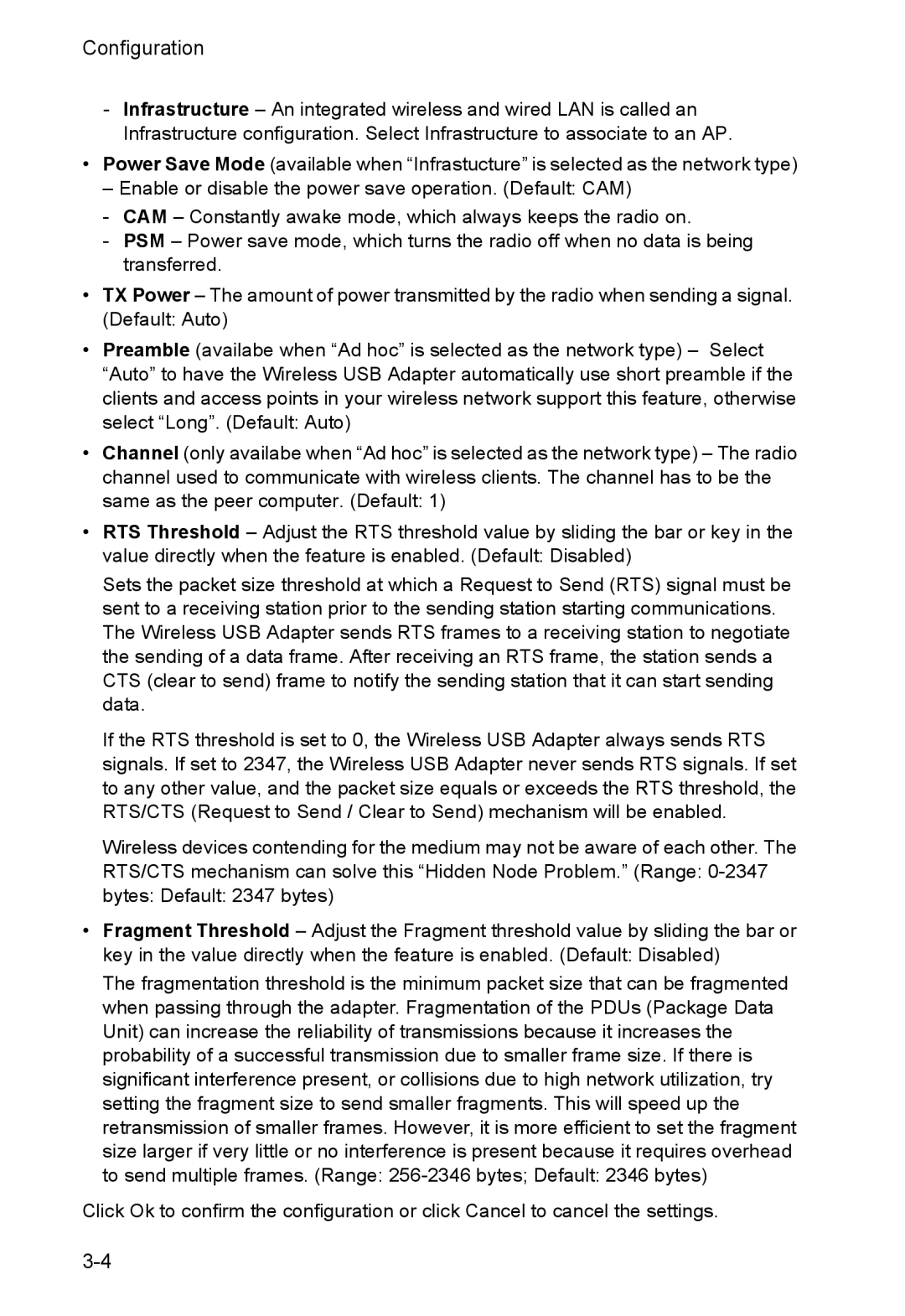Configuration
-Infrastructure – An integrated wireless and wired LAN is called an Infrastructure configuration. Select Infrastructure to associate to an AP.
•Power Save Mode (available when “Infrastucture” is selected as the network type)
– Enable or disable the power save operation. (Default: CAM)
-CAM – Constantly awake mode, which always keeps the radio on.
-PSM – Power save mode, which turns the radio off when no data is being transferred.
•TX Power – The amount of power transmitted by the radio when sending a signal. (Default: Auto)
•Preamble (availabe when “Ad hoc” is selected as the network type) – Select “Auto” to have the Wireless USB Adapter automatically use short preamble if the clients and access points in your wireless network support this feature, otherwise select “Long”. (Default: Auto)
•Channel (only availabe when “Ad hoc” is selected as the network type) – The radio channel used to communicate with wireless clients. The channel has to be the same as the peer computer. (Default: 1)
•RTS Threshold – Adjust the RTS threshold value by sliding the bar or key in the value directly when the feature is enabled. (Default: Disabled)
Sets the packet size threshold at which a Request to Send (RTS) signal must be sent to a receiving station prior to the sending station starting communications. The Wireless USB Adapter sends RTS frames to a receiving station to negotiate the sending of a data frame. After receiving an RTS frame, the station sends a CTS (clear to send) frame to notify the sending station that it can start sending data.
If the RTS threshold is set to 0, the Wireless USB Adapter always sends RTS signals. If set to 2347, the Wireless USB Adapter never sends RTS signals. If set to any other value, and the packet size equals or exceeds the RTS threshold, the RTS/CTS (Request to Send / Clear to Send) mechanism will be enabled.
Wireless devices contending for the medium may not be aware of each other. The RTS/CTS mechanism can solve this “Hidden Node Problem.” (Range:
•Fragment Threshold – Adjust the Fragment threshold value by sliding the bar or key in the value directly when the feature is enabled. (Default: Disabled)
The fragmentation threshold is the minimum packet size that can be fragmented when passing through the adapter. Fragmentation of the PDUs (Package Data Unit) can increase the reliability of transmissions because it increases the probability of a successful transmission due to smaller frame size. If there is significant interference present, or collisions due to high network utilization, try setting the fragment size to send smaller fragments. This will speed up the retransmission of smaller frames. However, it is more efficient to set the fragment size larger if very little or no interference is present because it requires overhead to send multiple frames. (Range:
Click Ok to confirm the configuration or click Cancel to cancel the settings.
